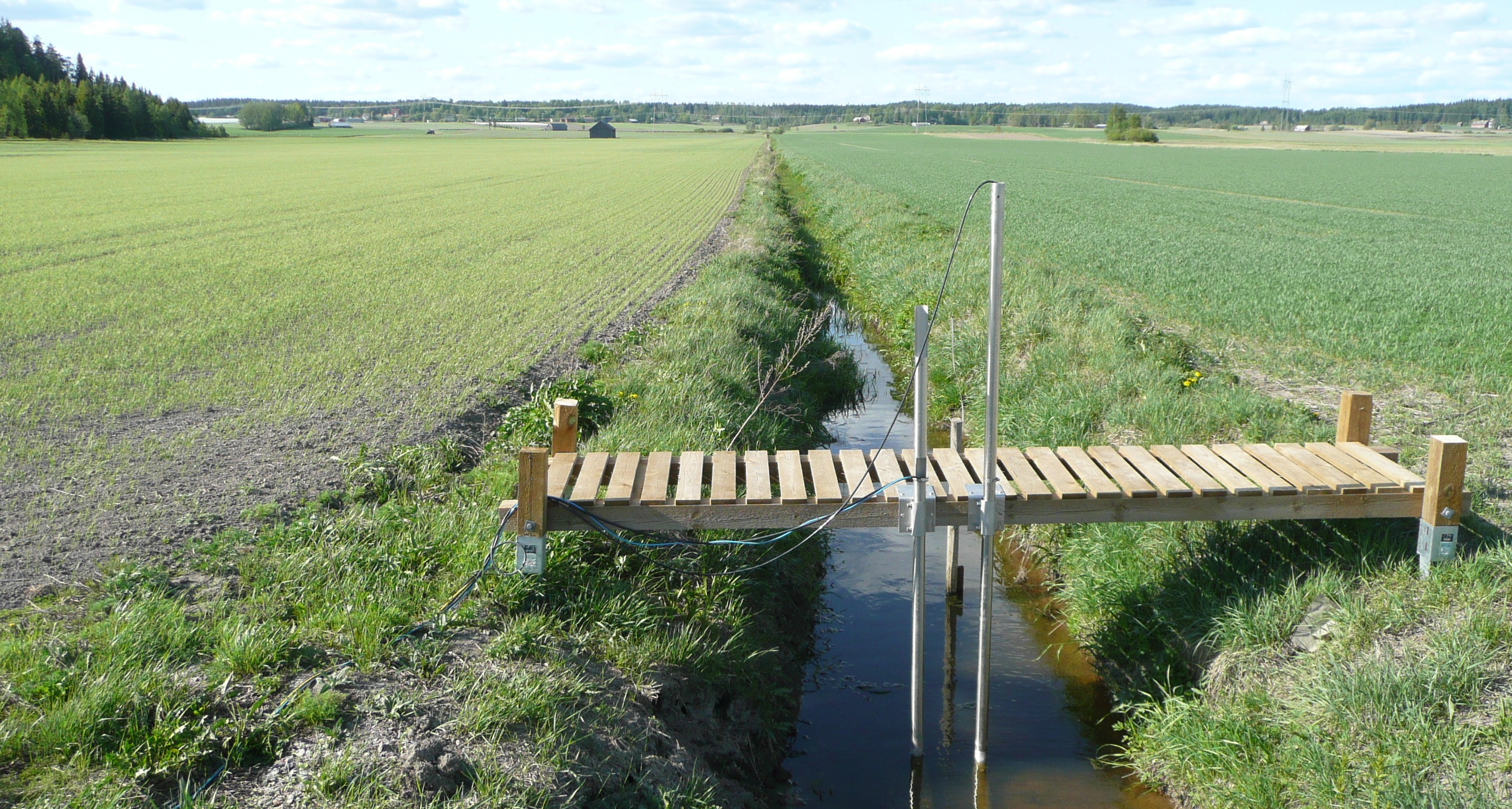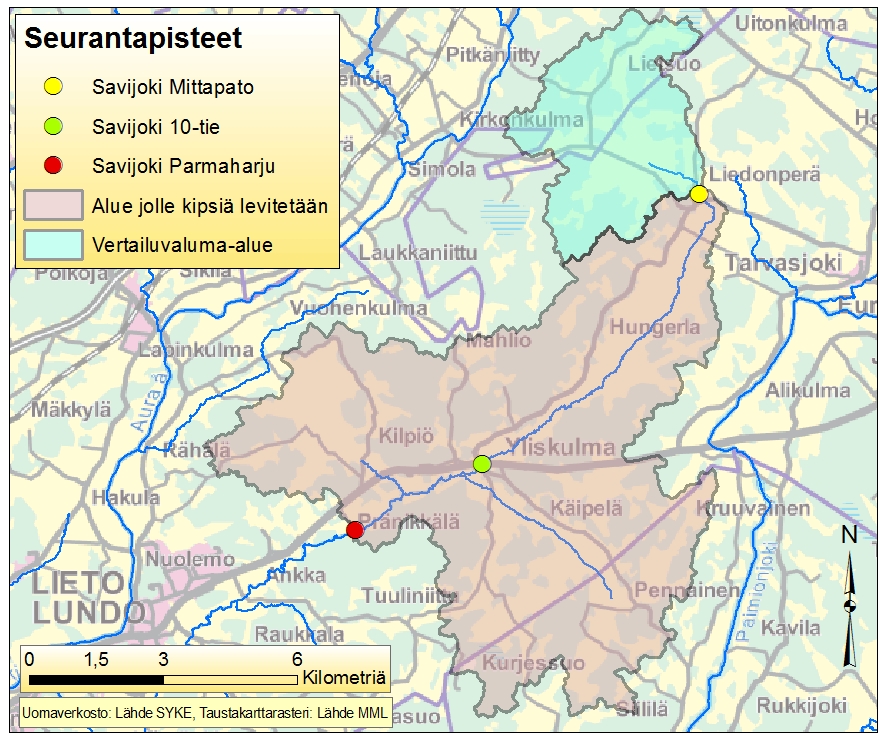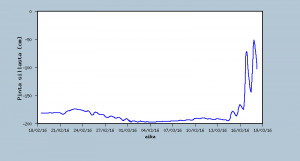
Water quality is being monitored with continuous measuring and with manual sampling. With these methods information about both dissolved and particulate phosphorus, as well as total suspended solids, turbidity, and sulfate from gypsum in the river water is collected. The data is open, so anyone interested can go have a look at www.luodedata.fi/savehanke.

Monitoring takes place at three different locations along the Savijoki river. One location is at the control area upstream while two sets of measuring instruments are situated downstream at the pilot area. The same locations are used for both continuous monitoring and manual sampling.
The turbidity of the water indicates the amount of soil suspended in the water – i.e., the more intense the erosion of the fields, the more turbid the water. When the turbidity reaches 1,000 FTU, a litre of water holds approximately one gram of soil. Turbidity also describes the amount of phosphorus bound in the soil: when the turbidity reaches 1,000 FTU, a litre of water contains approximately 1.4 milligrams of phosphorus. Gypsum is expected to reduce erosion and thus have an impact on the turbidity of the water.
In general, turbidity increases as the volume of water flow increases, and a turbidity value of 1,000 FTU is only likely during intense autumn rains or during the melting of the snow. It is impossible to deduce the streamflow data directly from the sensor results, but the height of the water level provides some indication: the higher the water, the more water is flowing in the Savijoki river.
The fluorescence of the humus indicates the amount of dissolved organic matter. Some organic matter is always washed away into the waterways, which can be reflected in the brown colour of the water. The leaching of organic matter should be minimised, as organic matter improves the structure of the soil. In addition, when organic matter leaches into the water, it degrades faster than it would on land, leading to increased greenhouse gas emissions. Once the link between fluorescence and the amount of dissolved organic carbon as indicated by laboratory testing from the Savijoki river has been determined, the results will be expressed directly in terms of carbon amounts. Fluorescence is expected to drop as a result of gypsum application, as the increase in the ionic strength of the soil will also promote the retention of organic matter.
The water’s conductivity is determined by the quality and amount of ions dissolved in the water. It can be used to estimate the leaching of the gypsum from the fields, as the calcium and sulfate in the gypsum dramatically increase the conductivity of the runoff. Conductivity increases after gypsum application, and then begins to gradually decrease. Once the conductivity of the water has permanently dropped to the original level, the gypsum can be said to have been washed away. However, the quality of the water in the Savijoki river varies greatly with the amount of rain, and short-term changes to the water quality do not reliably indicate the extent or duration of the effects of the gypsum.




